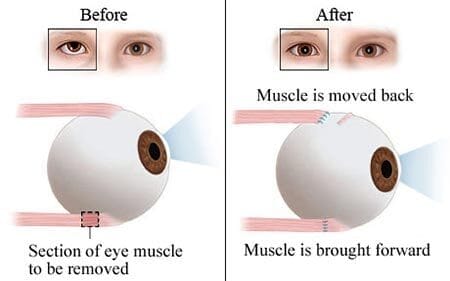
Lazy eye surgery is a procedure done to correct some of the underlying causes of amblyopia, also known as lazy eye. This disorder causes permanently decreased vision, poor depth perception and eye strain. Amblyopia surgery improves the appearance and function of the affected eye by performing as many procedures as necessary, such as:
The optometrists and eye doctors at Eye Physicians in New York are reliable and experienced in diagnosing and treating a wide range of vision problems. They have a team of board-certified ophthalmologists who can provide you with comprehensive vision tests, accurate diagnosis, and personalized lazy eye correction procedures. You can access the latest technology and equipment to ensure the best outcomes. This team offers cutting edge vision correction procedures including lazy eye surgery.
Lazy eye surgery is a procedure that can correct some of the underlying causes of amblyopia, such as strabismus, cataracts, droopy eyelids and corneal scars. Amblyopia surgery is usually done as an outpatient procedure, meaning you or your child can go home the same day. The surgery typically takes less than an hour to complete.
Depending on the condition, different types of surgery may be performed. Some of the common surgeries for lazy eye include:
Lazy eye correction surgery has distinct advantages in correcting amblyopia. For one, it can correct some of the underlying causes of lazy eye. The various procedures can also improve eye alignment and coordination, which enhances visual acuity and reduces double vision. Other advantages offered by eye surgery for lazy eye include:
When you rely on the expertise of the talented eye doctors at NYC Eye Physicians, you and your children are always made comfortable before any procedure and assured that you won’t feel any pain. You may have slight discomfort for a day or two after a procedure that required your doctor to make small incisions, but that goes away in a day or two and can be managed with over-the-counter medication as recommended by your doctor.
Contact Eye Physicians in Downtown Manhattan, where you benefit from the latest technology and techniques in eye surgery. If left untreated, lazy eye can lead to permanent vision loss, poor depth perception, and reduced quality of life. It can especially affect a child’s learning, social and emotional development. That’s why it’s important to detect and treat lazy eye as early as possible.
In addition to lazy eye surgery, you can access other innovative vision procedures, including:
Keep in mind that early detection and treatment are crucial to successfully fixing lazy eye, especially during visual development between birth and 7 years of age. Without proper amblyopia treatment, the condition can lead to permanent vision loss or decreased depth perception. Consult our team of ophthalmologists and optometrists at Eye Physicians in New York City for personalized advice and lazy eye treatment options.
Eye Physicians
110 Lafayette St, Suite 503
New York, NY 10013
(212) 292-4814
Entrust the care of your precious eyesight to highly skilled and experienced eye care professionals. For top-notch ophthalmologists and optometrists in Downtown Manhattan, choose Eye Physicians. Eye Physicians ensures prompt care, precise diagnosis, and personalized treatment plans.
Schedule an Appointment